John Hurrell – 20 July, 2016
The result is not the same as dressmakers' or tailors' cutting patterns on pinable tissue paper - as perhaps you might think - for they are ‘blueprints' for before the material is stitched to join up two edges to become a wearable article of clothing; Culbert's works are made using subtractive processes after this stitching has occurred, after flat planes of fabric have become hollow, wearable, three-dimensional objects.
Auckland
Pip Culbert
Seams
Curated by Hopkinson Mossman
(part of Singular Pluralities ∞ Plural Singularities, curated by Misal Adnan Yildiz)
1 July - 27 August 2016
It seems extraordinary that the late Pip Culbert is far better known in Europe than in New Zealand, where she often visited with her husband Bill, sometimes to exhibit - but apparently that is the case. Her practice fitted in with many of the English sculptors of the eighties like Tony Cragg and Bill Woodrow, because of its interest in materials and cutting not only as a basis of transforming a commonplace object, but also as a means of regenerating meaning.
It was unusual because her innovative subtractive processes opened up the notion of what a drawing (if we boldly include here her skeletal arrangements of ‘found’ seams pinned to a wall) might be, but also extended the key notion championed by Jasper Johns in the mid-sixties: take an object and do something to it. (Then) do something else to it. Think of all the great artists who have worked this way: Douglas Gordon, Ceal Floyer, Eric Cameron, Richard Prince; John Stezaker.
This splendid exhibition of sixteen intricate fabric remnants (ie. seams with the material on either side removed) is surprisingly decorative. Her method was also truly investigative, as if she really didn’t know what she was doing until after she had done it. Subtractive activity led to discovery of new associations for each ‘mutilated’ but delicate item. New forms emerged from store-bought or found objects through their fabric panels being cut away. It was a repeatable process of searching.
Culbert reworked a fabulous range of items to create this collection of works in Artspace: men’s shirts, a shopping bag, a suitcase cover, an awning, jean back pockets, shirt front pockets, a military parachute. The result of course is not the same as dressmakers’ or tailors’ cutting patterns on pinable tissue paper - as perhaps you might think - for they are ‘blueprints’ for before the material is stitched to join up two edges to become (usually) a wearable article of clothing; Culbert’s works are made using subtractive processes after this stitching has occurred, after flat planes of fabric have become hollow, wearable, three-dimensional objects. Hence the pins are used to curtail the floppiness of the seams, to pinion them down, to keep the double-fabric lines taut.
This is particularly noticeable in Trunk Cover, Malle (1990) which looks like an orthogonal diagram with its parallel lines. Its structure is clearer in the photograph in the publication than in the show itself, where the walls are dark and don’t provide the needed contrast of white walls.
One of the most memorable works is the blue-green pocket positioned near the Artspace office. Its bottom lefthand corner is elegantly curved and so it looks like a pictograph drawn using ink and a brush, or an example of Kufic script. It has a fluid sweeping line that appears calligraphic, while the colour is breathtaking.
Wonderful as this exhibition is, Culbert deserves a far bigger survey - with a solid publication containing several analytical essays on this immensely interesting work that can generate many sorts of reading (as Tina Barton’s excellent essay for Artspace shows). Hopefully and eventually, a major institution will make it happen.
John Hurrell
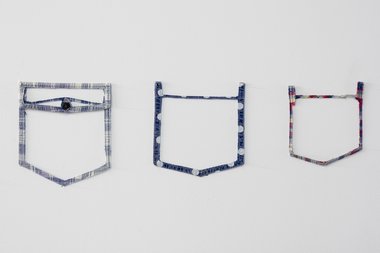

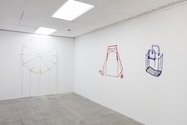

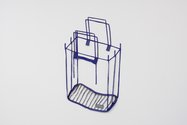

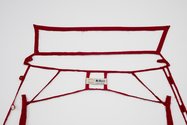


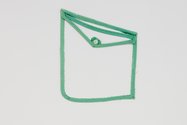
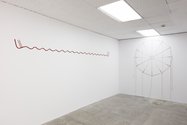
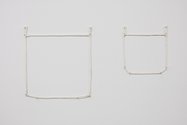
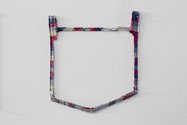
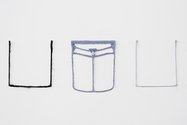
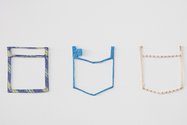
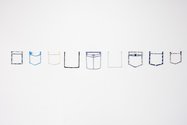
 Two Rooms presents a program of residencies and projects
Two Rooms presents a program of residencies and projects Advertising in this column
Advertising in this column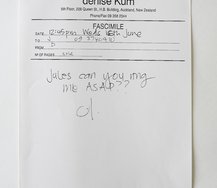
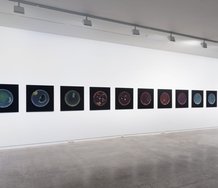
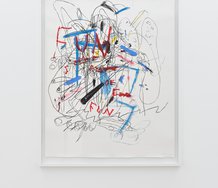

This Discussion has 0 comments.
Comment
Participate
Register to Participate.
Sign in
Sign in to an existing account.